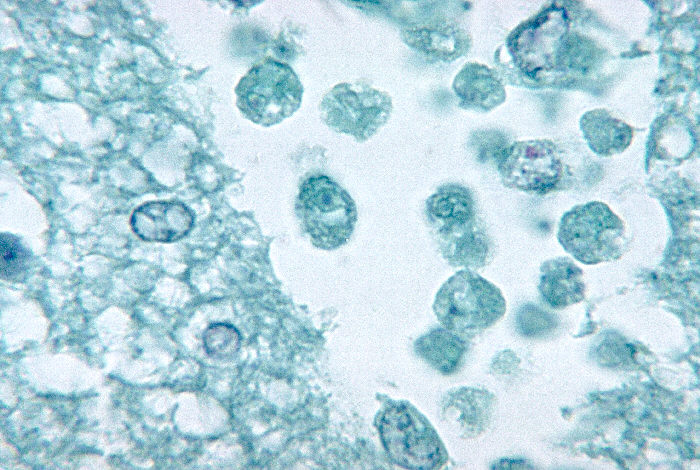In a follow-up on the case of Naegleria fowleri infection in South Carolina recently reported, the identification of the patient is now known– 11-year-old Hannah Katherine Collins, according to a GoFundMe page.

Image/CDC
According to state epidemiologist, Linda Bell, M.D. , “The exposure is thought to have occurred on July 24 while the individual was swimming near Martin’s Landing on the Edisto River in Charleston County.”
According to an ABC News report, the patient is being treated at Medical University of South Carolina.
This is the eighth documented Naegleria fowleri case in South Carolina. The last case in the state was seen in 2012.
The investigational drug called miltefosine was requested for treatment of the infection. According to Todd Maclaughlan, President and CEO of Profounda in an emailed statement to Outbreak News Today:
Profounda was asked to send Impavido (miltefosine) for a patient in South Carolina which was thought to be an amoebic infection and therefore time was of the essence based on information from the CDC. Profounda sent the drug at 1030 pm Monday night by ups critical care courier by car from Orlando and it arrived at its destination at approximately 530 am. While Impavido is approved for all three forms of Leishmaniasis (cutaneous, mucosal and visceral) as an oral dosed product, the CDC also recommends miltefosine for treatment of free-living ameba (FLA) infections caused by Naegleria fowleri, Balamuthia mandrillaris, and Acanthamoeba species.
Miltefosine was used as part of the treatment for 2013 Arkansas N. fowleri survivor, Kali Hardig.
Also in 2013, second child, an 8-year-old male, is also considered a PAM survivor, although he has suffered what is likely to be permanent brain damage. He was also treated with miltefosine but was diagnosed and treated several days after his symptoms began. Cooling of the body below normal body temperature was not used.
Naegleria fowleri is a relatively rare, pathogenic amoeba found in warm or hot freshwater like lakes, rivers and hot springs. It is also possible to get it from dirty unchlorinated or under-chlorinated swimming pools. This parasite is found worldwide and in the United States, it is found mainly in the southern-tier states.
People typically get it by swimming, jumping or playing in freshwater and get the water up their nose. From there the parasite travels to the brain and spinal cord and necrotizes or basically eats brain tissue. The disease is known as primary amoebic meningoencephalitis (PAM) and it has a very rapid progression. Typical symptoms may start after a day or two; headache, fever, nausea and vomiting. Later symptoms may include seizures, irrational behavior, hallucinations and finally coma and death. The course of the disease typically last about a week. Because the symptoms are very similar to bacterial meningitis, PAM may not even be considered in the diagnosis.
Fortunately, it’s a pretty rare disease, with only approximately 40 cases reported in the past decade. Unfortunately, it carries with it a fatality rate at 98 percent.
Earlier this year, two additional cases were reported in a Ohio teen and a Texas 19-year-old. Both cases were fatal.
Related:
- Amoeba treatment: Fort Worth hospital 1st in nation to have miltefosine on hand
- Outbreak News Radio: Naegleria fowleri and amoeba awareness: Personal stories and the great work from ‘Kyle Cares’ and ‘Swim Above Water’
- Amoeba awareness: Naegleria fowleri


2 thoughts on “Charleston ‘brain-eating amoeba’ patient receives miltefosine from Orlando company”